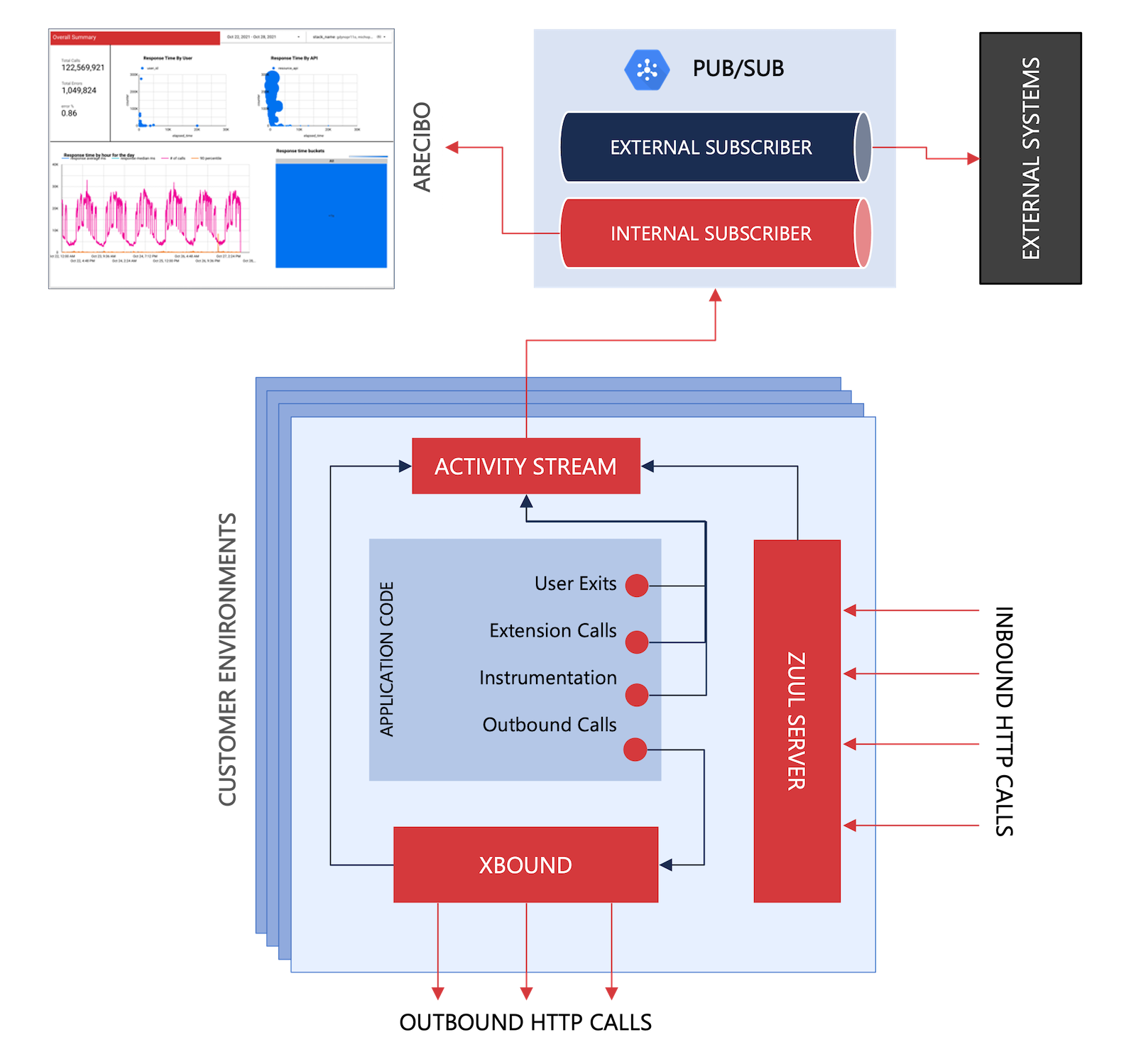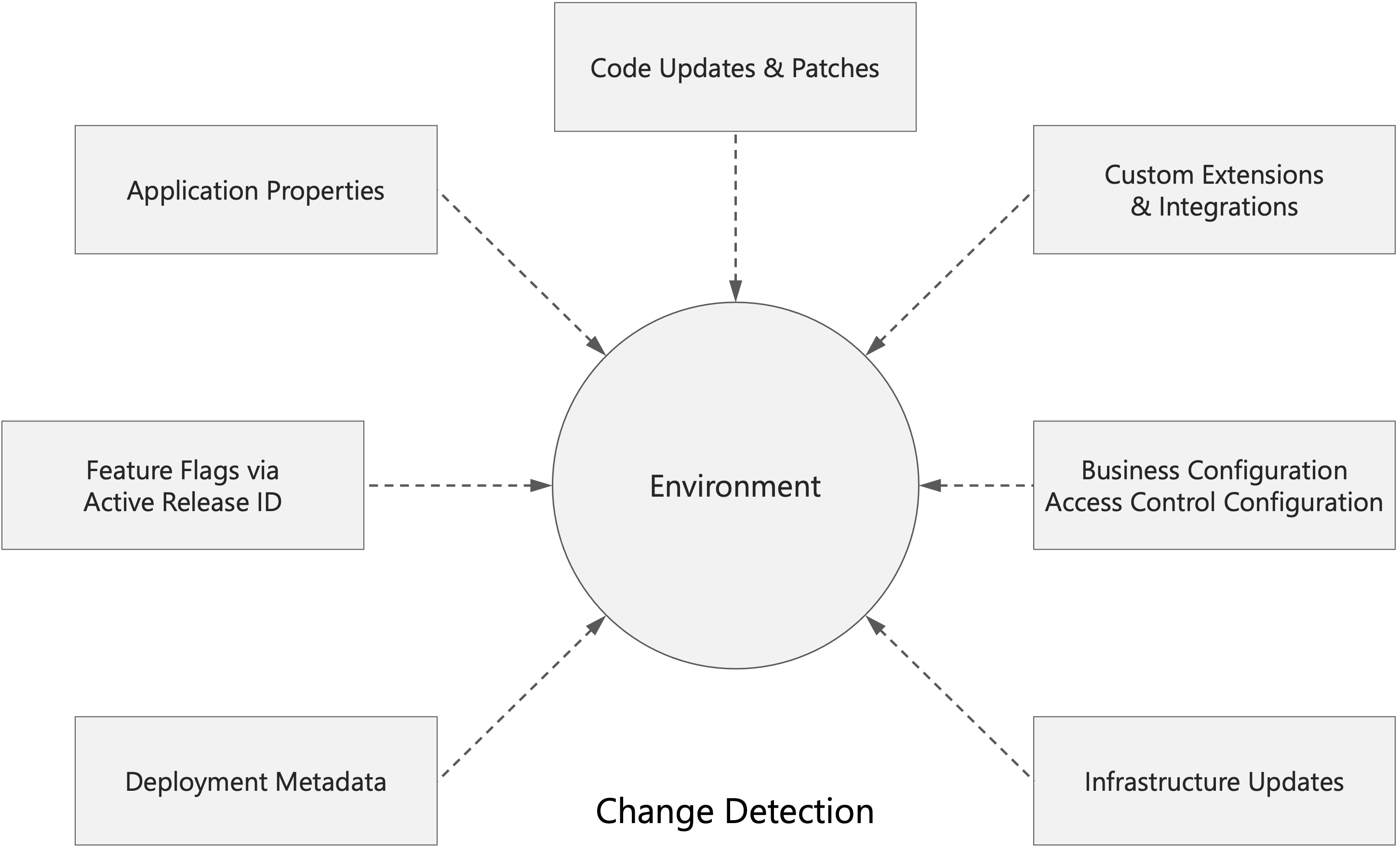Auditability
Introduction
Manhattan Active® Platform has built-in mechanisms to track and audit user activity, HTTP traffic, extension events, and changes to application configuration. Depending on the type of the tracking and auditing data, it can be accessed and viewed by the customer via the application UI, REST API, Pub/Sub integration or data replication. The sections below summarize the tracking and auditing mechanisms:
Activity Stream
Activity Stream is a module in Manhattan Active® Platform responsible for tracking and logging all system interactions that involve the applications deployed on the platform. These interactions include:
- Inbound HTTP invocations: All HTTP calls received by Manhattan Active® Platform, including REST API invocations and traffic originating from the web UI or mobile apps.
- User Authorization requests: All requests for accessing the user’s OAuth2 access token, or reading or updating user information such as roles, grants, organization structure etc.
- Security configuration access: All requests for reading or updating security configuration such as IDP integration, Client IDs/secrets etc.
- Extension handler invocations: All events pertaining to the custom extension such as synchronous call-outs (user exits) and extension points
- Outbound HTTP invocations: All HTTP calls made by Manhattan Active® Platform, including REST API invocations made to customer’s host systems or custom 3rd party addresses
These system interactions, or “activities” are captured and published to a dedicated topic in Google Cloud Pub/Sub as messages with JSON payload in a standardized format. These messages can then be consumed via the Pub/Sub subscriptions. Customers can optionally choose to develop a Pub/Sub consumer using the authorized Service Account key delivered by Manhattan to store, index, and process the activity stream data in the system of their choice.
It should be noted that Manhattan Active® Platform does not track the user authentication when the authentication is carried out by an external identity provider such as Okta or Azure AD. The tracking and auditing events in Manhattan Active® Platform begins when it receives the request, or when it sends a request out to an external location.
The diagram shown below illustrates the basic design of Activity Stream, and the flow of the activities it captures:

Activity Stream data is used by Manhattan Reliability Engineering and ProdOps teams internally for monitoring, incident troubleshooting and change-detection purposes.
By default, the activities posted to Pub/Sub include only the message headers, and not the body of the message (meaning, the business data) due to potential privacy concerns that the customer may have. It is, however, possible to configure Activity Stream to capture the body of the messages if the customer desires to do so. If the capture configuration includes the message body, the storage and transmission costs may exceed the thresholds defined in the customer contracts, and the customer may be subjected to additional billing for the overages.
Contact Manhattan Sales or Professional Services for more information about implementing Activity Stream.
Audit Framework
Audit Framework is part of the Entity Framework library from the Manhattan Active® Platform. Audit Framework is instrumented in the application components as a runtime dependency and is responsible for capturing changes to configuration data on commit. Configuration data includes all entities that represent the metadata or settings of Manhattan Active® Platform and products that the customer may configure as part of the implementation process. While the full extent of Audit Framework functionality is out of the scope of this document, some examples of the configuration entities covered by the Audit Framework are listed below:
- Authorization and access control configuration such as Users, Organizations, Roles, Grants
- Business rules
- Business configuration such as Locations, Business Units, Stores, Schedules
- Payment configuration such as Payment Types, Parameters, Rules
- Batch job configuration such as Recurrence, Parameters, Schedules
- Custom extensions and message type configuration
Captured audit data (inserts, updates, and deletes) is indexed in Elasticsearch, and can be accessed via Audit user interface or REST API. More information about the Audit Framework can be found in the Manhattan Active® Platform product and platform documentation.
Audit data is used by Manhattan Reliability Engineering and ProdOps teams internally for monitoring, incident troubleshooting and change-detection purposes.
Change Detection
Manhattan has built a mechanism in Manhattan Active® Platform to be able to detect and capture changes that take place in the system. The Change Detection mechanism can detect several types of changes and store them in a structured way for future reference or, in some cases, for creating alerts in the system that can be investigated:
- Changes to deployment metadata and infrastructure: Container tag updates, Code Drop or Release ID changes, modification of global environment variables, sudden changes in compute allocation, etc.
- Changes to application’s properties and feature flags: Properties or feature flag configuration injected to the Spring Boot runtime and stack specific custom overrides
- Changes to application’s business configuration: Configuration that is created, updated, or deleted using the application user interface or REST API
- Changes to custom extensions & integration: Changes to custom extension or external integrations developed by the customer or Manhattan’s Professional Services staff
- Code changes between the previous and current Code Drop deploys

The Change Detection system exposes the detected changes (what changed, when, and how) in near real-time via user interface to the Manhattan Active® Operations team. While some of this information is also visible via the application’s user interface, most of it is used by Manhattan staff as part of managing the customer’s environment, and maintaining its availability.
Learn More
Author
- Kartik Pandya: Vice President, Manhattan Active® Platform, R&D.
Feedback
Was this page helpful?